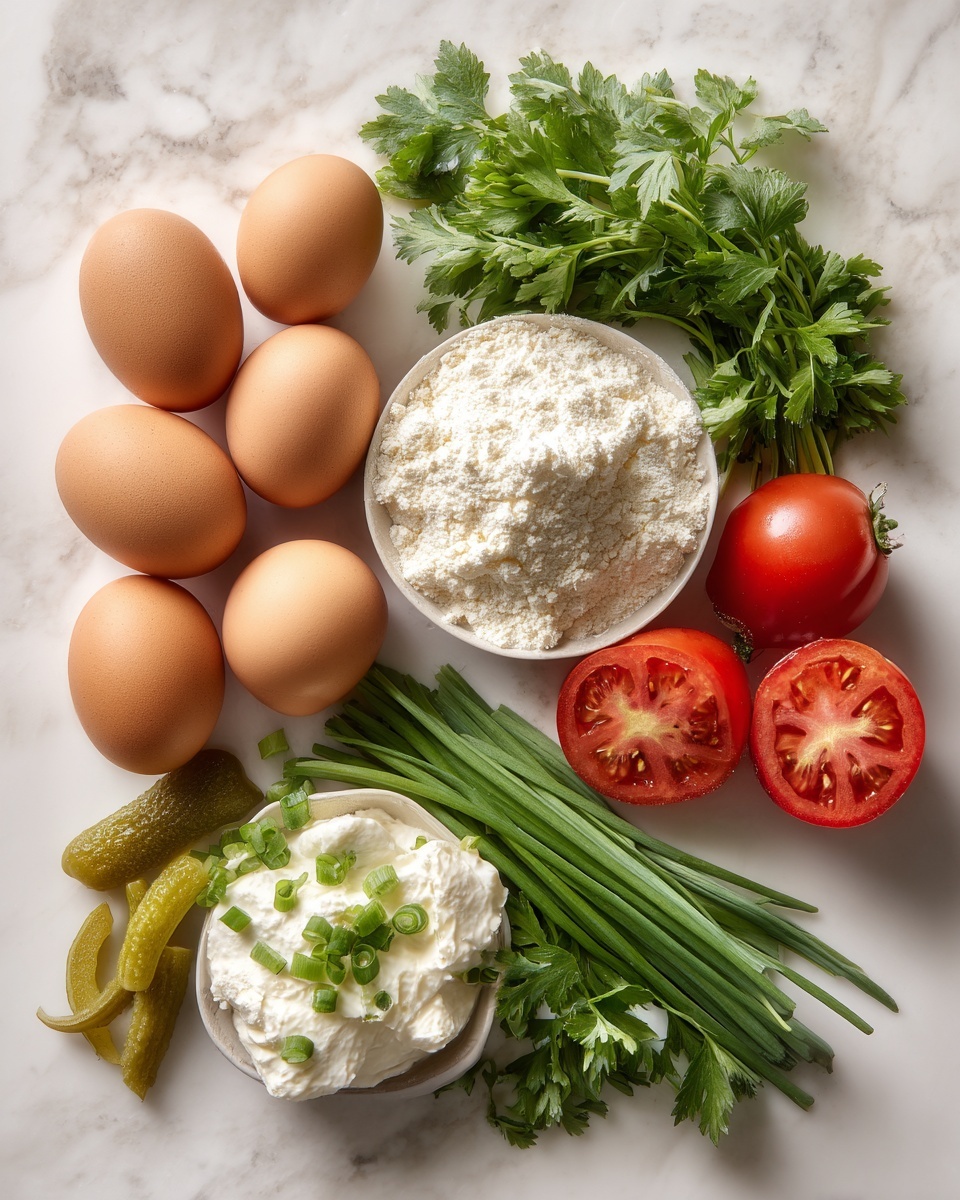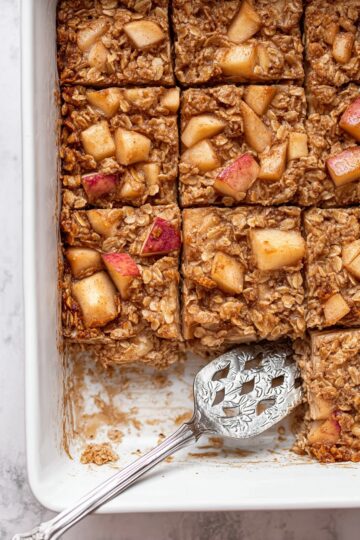There’s something irresistibly fresh and herby about this recipe that instantly brightens any breakfast table. The Herby Lebanese Omelet Recipe combines fragrant herbs with a delicate, crepe-like texture that’s both satisfying and light – making it a little morning game-changer in my kitchen.
Jump to:
Why You'll Love This Recipe
I still remember the first time I made this Herby Lebanese Omelet Recipe – the aroma of fresh cilantro and green onion filling my kitchen instantly lifted my spirits. This isn’t your everyday omelet; it’s airy, flavorful, and so versatile that you’ll want to add it to your regular breakfast or brunch rotation.
- Fresh Herb Explosion: The use of cilantro and green onion gives this omelet a bright, vibrant flavor unlike any other.
- Crepe-Like Texture: Thanks to the flour and baking powder, the omelet is delightfully light and just the right amount of fluffy.
- Simple Yet Impressive: This recipe is straightforward, but the end result feels fancy enough for guests or a treat-yourself morning.
- Perfect Pairings: Topping it with labneh and fresh tomato wedges adds creamy and tangy notes that make every bite exciting.

Ingredients & Why They Work
The ingredient list might look simple, but each plays a crucial role here. The eggs create the fluffy base, while the flour and baking powder help achieve that lovely crepe-like texture. Fresh herbs bring freshness and a pop of flavor that makes this omelet truly Lebanese in spirit.

- Eggs: The star of the show, giving richness and structure to the omelet.
- Green Onion: Adds a mild onion flavor and a bit of crunch that's just perfect.
- Cilantro: This herb packs a punch of bright, citrusy freshness that lifts the whole dish.
- Flour: Helps give the omelet a delicate crepe-like texture without weighing it down.
- Baking Powder: A small amount adds just enough lift for fluffiness.
- Olive Oil: For that subtle fruity touch and to keep the omelet from sticking.
- Kosher Salt & Black Pepper: Simple seasonings that enhance all the other flavors.
- Labneh or Greek Yogurt (Topping): Creamy, tangy, and cool, perfect to balance the herbs and eggs.
- Tomato Wedges (Topping): Adds juiciness and a pop of color for freshness.
- Pickle Spears (Optional Topping): For that signature Lebanese tang and crunch alongside your omelet.
Make It Your Way
One of the things I love most about this Herby Lebanese Omelet Recipe is how easily you can tweak it to your taste or the season. Want to try different herbs? Go for it. Prefer a spicier edge or milder flavors? It’s all up to you!
- Herb Variations: I’ve swapped cilantro for parsley or mint at times, and it works beautifully for a different herby vibe.
- Veggie Add-Ins: Adding finely diced bell peppers or tomatoes into the mix before cooking can be a tasty touch.
- Dairy-Free Option: Skip the labneh topping and serve with sliced avocado or a drizzle of tahini sauce.
- Spicy Twist: Sprinkle some Aleppo pepper or chili flakes into the batter if you’re craving a little heat.
Step-by-Step: How I Make Herby Lebanese Omelet Recipe
Step 1: Whisk the Eggs and Herbs
Start by cracking six fresh eggs into a bowl. Add a pinch of kosher salt and some freshly cracked black pepper to taste, along with the finely chopped green onions and cilantro. Whisk everything together until it’s fully combined and the herbs are evenly distributed. I find that whisking well incorporates air, giving a lighter texture later.
Step 2: Add Flour and Baking Powder
Sift in the flour and baking powder right into the egg mixture—this helps avoid lumps. Then whisk again until smooth. The batter should be runny but thick enough to coat the back of a spoon, just like crepe batter. If it feels too thick, a splash of water or milk can help loosen it up.
Step 3: Cook the Omelet Crepes
Heat a non-stick sauté pan over medium-high heat with ½ teaspoon of olive oil. When the pan is hot, ladle about ½ cup of the mixture in, swirling to spread evenly into a thin circle. Let it cook undisturbed until the bottom turns golden and the edges start to set—around 2-3 minutes. Carefully flip with a spatula and cook for another minute. Fold in half and slide it onto a plate. Repeat with the remaining batter, adding a little oil between batches if necessary.
Top Tip
Over the years, I’ve learned some handy tricks that keep these omelet crepes perfect every time. It might seem simple, but these little things make a big difference:
- Preheat Your Pan Properly: A well-heated pan ensures even cooking and prevents sticking, which is crucial for these thin omelets.
- Don’t Overfill the Batter: Use about ½ cup per crepe to maintain that delicate, thin texture without tearing.
- Gentle Flip: Use a thin, flexible spatula and slide it carefully under the crepe to flip without breaking it.
- Rest Your Batter: If time allows, let your batter rest for 5-10 minutes—this helps the flour hydrate and improves texture.
How to Serve Herby Lebanese Omelet Recipe

Garnishes
I always top my omelets with a generous spoonful of creamy labneh – the tang pairs perfectly with the herbs. Add bright tomato wedges and a few sprigs of fresh cilantro for color and extra freshness. Sometimes, I serve with crunchy pickle spears on the side, which adds that quintessential Lebanese tang.
Side Dishes
To round out the meal, I like pairing the omelet with warm pita bread and a simple cucumber-tomato salad dressed in lemon and olive oil. It keeps things light, fresh, and perfect for a leisurely weekend brunch.
Creative Ways to Present
For special occasions, I’ve layered these omelets in a stack with dollops of labneh and sprinkled za’atar in between layers—a beautiful, flavorful twist. You can also roll them up like wraps with herbs and salad inside for a fun, hand-held option.
Make Ahead and Storage
Storing Leftovers
I usually store leftover omelets in an airtight container in the fridge for up to 2 days. They keep their texture well, but I recommend adding fresh toppings when serving to revive that fresh taste.
Freezing
I've frozen these omelets by layering parchment paper between them in a freezer-safe container. They freeze well for up to a month. Just thaw overnight in the fridge before reheating for best results.
Reheating
For reheating, I gently warm the omelets in a non-stick skillet over low heat to keep them from drying out. Microwave works in a pinch, but low and slow on the stovetop preserves their delicate texture much better.
Frequently Asked Questions:
This omelet is lighter and crepe-like thanks to the addition of flour and baking powder, and it’s packed with fresh herbs like cilantro and green onion that give it a distinctive Lebanese flavor profile.
Absolutely! While cilantro is traditional and really brightens the dish, parsley, mint, or even dill can be great substitutes. Feel free to experiment with what you have or what you enjoy most.
The recipe includes flour, so it’s not gluten-free. However, you can try swapping the flour for a gluten-free blend or chickpea flour, but results might vary in texture. Testing a small batch first is a good idea.
You want to flip when the edges look set and the bottom is golden brown. It should hold together easily on your spatula. If the center is still too runny or the edges are wobbly, give it a little more time.
Final Thoughts
This Herby Lebanese Omelet Recipe is one of those dishes that feels both comforting and refreshing, like a gentle hug from your kitchen. It’s light enough to enjoy any time but packed with flavor to impress. Next time you want to serve up something that’s simple yet special, this omelet has you covered—I hope it becomes a staple in your home as it has in mine!
Print
Herby Lebanese Omelet Recipe
- Prep Time: 5 minutes
- Cook Time: 7 minutes
- Total Time: 12 minutes
- Yield: 6 servings
- Category: Breakfast
- Method: Stovetop
- Cuisine: Lebanese
- Diet: Vegetarian
Description
This Herby Lebanese Omelet is a light and fluffy savory crepe infused with fresh green onions and cilantro. It’s cooked on the stovetop to golden perfection and served with creamy labneh or Greek yogurt and fresh tomato wedges, making it a flavorful and satisfying breakfast or brunch option.
Ingredients
Omelet Batter
- 6 eggs
- ⅓ cup green onion, finely chopped
- ¼ cup cilantro, finely chopped
- 4 tablespoons flour
- ½ teaspoon baking powder
- Kosher salt, to taste
- Freshly cracked black pepper, to taste
- 1 tablespoon olive oil
- ½ teaspoon olive oil (for cooking)
Toppings
- 1 cup Labneh or Greek yogurt
- Sliced tomato wedges
- Fresh cilantro
- Pickle spears
Instructions
- Whisk Eggs and Herbs: In a large bowl, whisk together the eggs, kosher salt, freshly cracked black pepper, finely chopped green onion, and cilantro until well combined.
- Add Flour and Baking Powder: Sift the flour and baking powder into the egg mixture. Whisk thoroughly until the batter is smooth and runny but thick enough to coat the back of a spoon like crepe batter.
- Preheat Pan: Heat a non-stick sauté pan over medium-high heat and add ½ teaspoon of olive oil, allowing it to warm evenly.
- Cook Omelet Crepes: Ladle ½ cup of the egg batter into the pan, swirling gently to spread evenly. Let the mixture set until the bottom is golden brown, approximately 2-3 minutes.
- Flip Omelet: Carefully flip the omelet using a spatula and cook the other side for 1 additional minute until fully set and lightly golden.
- Fold and Serve: Fold the omelet in half and transfer to a serving plate. Repeat the process with the remaining batter to make a total of 6 crepes.
- Add Toppings: Serve each omelet with a spoonful of labneh or Greek yogurt, sliced tomato wedges, fresh cilantro, and pickle spears for a delicious and authentic Lebanese breakfast experience.
Notes
- If labneh is unavailable, thick Greek yogurt is a perfect substitute to maintain the creamy texture.
- Adjust seasoning with additional salt and pepper to taste before cooking the omelets.
- Use a non-stick pan to prevent sticking and ensure easy flipping of the crepes.
- For a gluten-free option, substitute the flour with chickpea flour or a gluten-free all-purpose blend.
- Serve warm immediately for the best texture and flavor.
Nutrition
- Serving Size: 1 omelet
- Calories: 150 kcal
- Sugar: 1 g
- Sodium: 250 mg
- Fat: 10 g
- Saturated Fat: 2 g
- Unsaturated Fat: 7 g
- Trans Fat: 0 g
- Carbohydrates: 7 g
- Fiber: 1 g
- Protein: 9 g
- Cholesterol: 180 mg







Leave a Reply